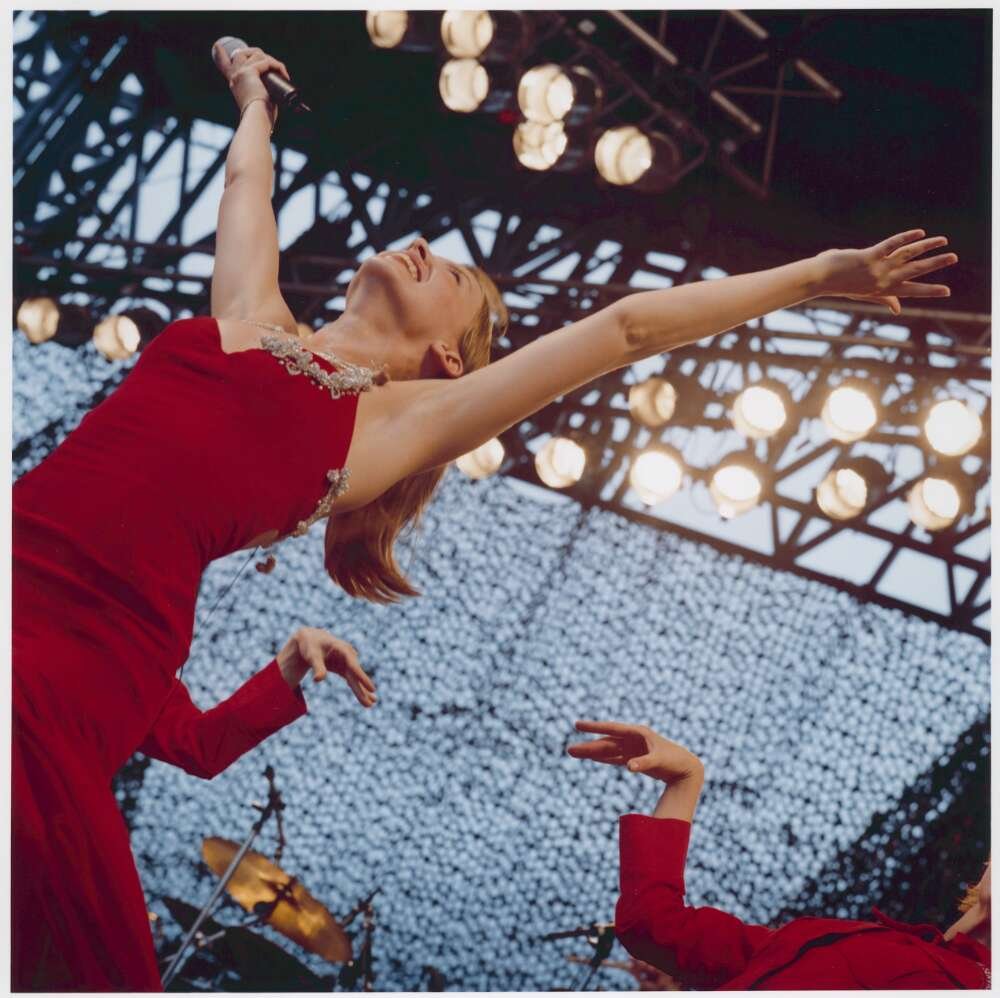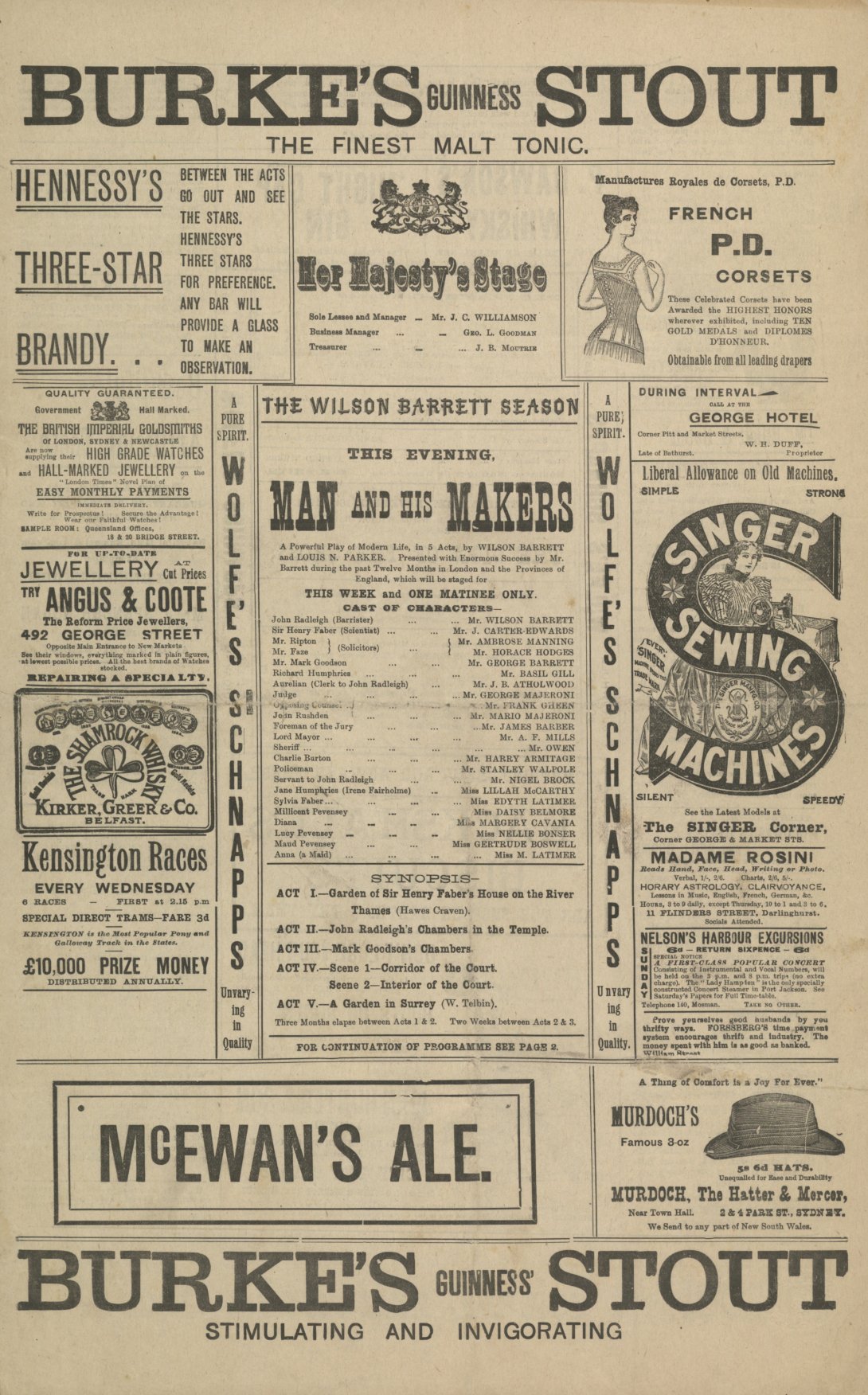

What is a broadside?
A large, printed sheet of paper. Historically, broadsides were used to communicate a message textually – for example, announcing events.

Searching the catalogue
The catalogue is the primary tool researchers can use to discover resources held by the Library. The catalogue includes not only our physical collections but also searches eResources, digitised material, audio recordings, finding aids for manuscripts and selected PROMPT Australian Performing Arts Programs and Ephemera collections.
Searching for the names of artists, venues and troupe or company names can be the best place to start.
When you find material that is a match for what you need, review the subject headings, authors and contributors in the catalogue record. Subject headings can be clicked to view a listing of similar materials.
Browse by subject
Although you can’t browse the Library’s shelves in person, you can use the catalogue to browse by title, author, subject or call number. Subject is often the most useful.
To search for works about performing arts, open the catalogue and select ‘subjects’ from the drop down menu. Type a subject in the text box (for example, 'performing arts') and the catalogue will suggest relevant subject headings.
In addition to those subject headings suggested by the catalogue, you can also search all fields by keyword, open a record and view the subject headings assigned to that item. This can be great way to find related subject headings you may not have yet considered.
For example, a subject search for ‘circus australia’ will display items with the subject Circus -- Australia, but these items may also show the subject heading of Circus -- Australia -- History, or numerous niche subjects such as Circus -- Australia -- Photographs, Circus -- Australia -- Anecdotes, Circus -- Australia -- Posters, and Circus -- Comic books, strips, amongst others which can be selected to view further items with that subject heading.
Browsing using broad subject headings can be a helpful place to start. Examples of these include:
- Performing arts
- Dance
- Music
- Torres Strait Islanders -- Music
- Theatre
- Circus
How do I search for:
Performers
Enter the performer's name into the catalogue search box. This will conduct a key word search of all the fields on a catalogue record and is recommended for your first search as the name may appear in the title (if they are the subject of the work), in the creator field (if it is something they authored or created) or in the subject field.
Depending on the nature of the material, it may be more discoverable under the performer's birth name or stage name; the more variations that are used to search, the more resources will be found.
For broader searches it can be useful to search by occupation. Some examples of these are Artistic directors, Ballet dancers, Actors, Circus owners, Circus performers, and Choreographers.
Companies and organisations
It is worth noting that company names may appear within the subject or as a creator/contributor – for example, in this result for Australian Ballet. Initially broad searches without limits are effective.
When researching companies and organisations, you may find related resources – for example, company histories, directories and annual reports.
Annual reports are also known as 'Report to shareholders', 'Annual review' or 'Summary review'. To find them in the catalogue it can be useful to search for the company name and, using the options to the right-hand side of the full catalogue search results, limit the results by 'Format' to ‘Journal’.
Performing arts materials
Identifying materials which are unique to the performing arts sector, such as theatre programs, broadsides and scrapbooks, can be as simple as searching the catalogue for the name of the artist, company, entrepreneur, production or venue followed by the terms 'PROMPT' and 'programs'. An example of this is the Bangarra Dance theatre programs (Indigenous).
Similarly, the term 'broadside' can be used, or 'PROMPT scrapbook' for performing arts scrapbooks.
Finding performing arts ephemera in the PROMPT collection
PROMPT material is arranged predominantly by individual artist (e.g. Nellie Melba) or company (e.g. Bangarra Dance Theatre) or entrepreneur’s name (e.g., J.C. Williamson, Garnet H. Carroll) and also has a dedicated collection finding aid. The PROMPT collection contains material relating to:
- Professional productions performed in Australia, including those featuring overseas performers
- Australian companies and artists performing overseas
- Performances overseas of Australian plays, operas and other works
- General material on Australian performers, playwrights, productions, venues, performing arts organisations, etc.
Reference works and print collections
Reference works are a good place to look when more specialised resources are not proving easy to find. In addition to the direct information they provide, they can be a valuable source of references to other related materials. Some of the reference works in the Library’s collection which relate to the performing arts are:
Archived websites
Find a list of archived webpage collections on the Performing Arts in the Library's discovery service, Trove.
Indigenous collections
Mura Gadi is an online guide to significant manuscripts, pictures and oral histories in the National Library of Australia relating to Aboriginal and Torres Strait Islander peoples prior to 2003.
Children's entertainment
Collection of posters on children's entertainment: 38 posters from Australian and overseas children’s productions. Acts include 19th century Australian high-wire performer Ella Zuila, Circus Oz, the Flying Fruit Fly Circus, Acrobats of China, the Tintookies and Bananas in Pyjamas.